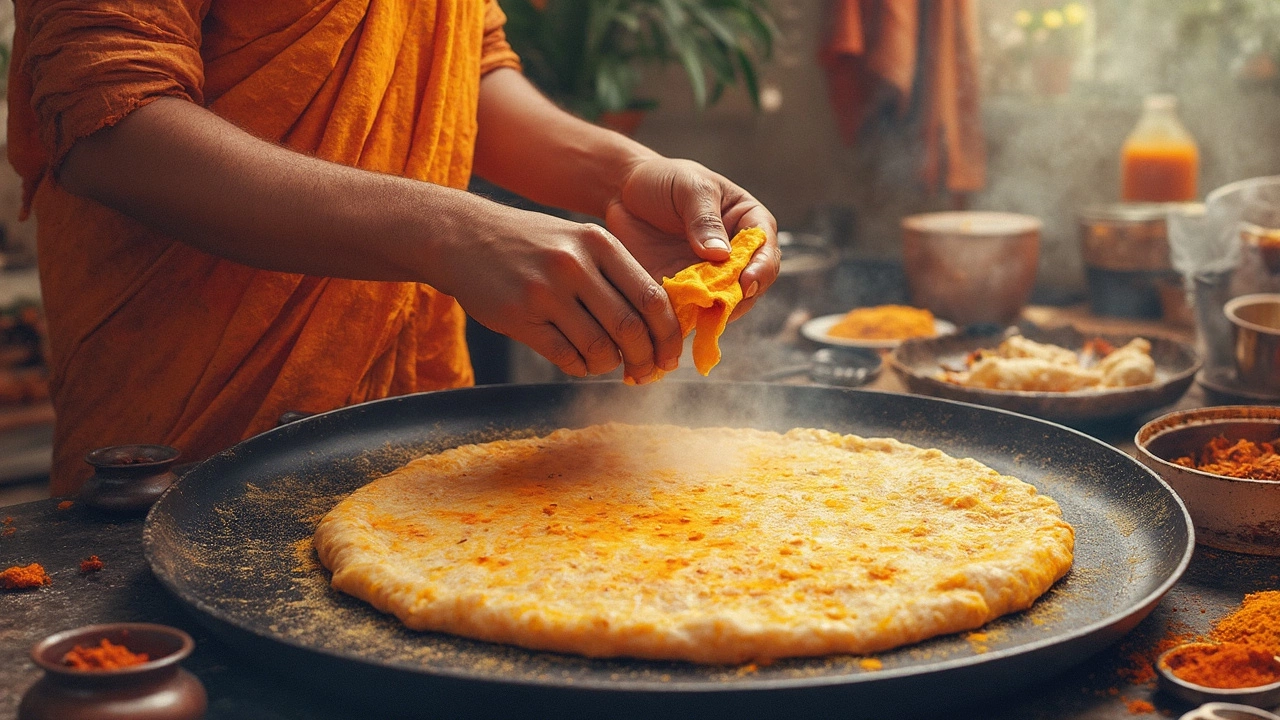Roti Puffiness: Simple Tips for Perfectly Puffy Rotis Every Time
Ever wondered why some rotis puff up like tiny balloons while others stay flat and dense? The secret isn’t magic – it’s about the right flour, dough water, and a few cooking tricks. Below you’ll find the exact steps that turn ordinary dough into light, airy rotis that look as good as they taste.
Why Rotis Puff and How Heat Plays a Role
When you place a rolled dough on a hot tawa (flat skillet), the moisture inside the dough turns into steam. That steam pushes the layers apart, creating a pocket of air. If the surface isn’t hot enough, the steam leaks out and the roti stays flat. Too hot, and the outside burns before the steam can build up. Aim for a medium‑high heat where the surface sizzles the moment the dough touches it.
Another factor is gluten development. Good gluten creates a stretchy network that traps steam. That’s why high‑protein wheat flour (atta) works best. Whole‑wheat flour with low protein will give you a softer roti but it often won’t puff. Balance is key: a mix of 80% strong atta and 20% softer whole‑wheat gives structure and tenderness.
Step‑by‑Step Tricks for Super‑Puffy Rotis
1. Choose the right flour. Look for "atta" labeled as high‑protein (around 10‑12%). If you can, sift the flour once or twice to remove large particles and let the flour breathe.
2. Hydrate properly. Use warm water (about 35‑40°C) and add it slowly. Aim for a soft, non‑sticky dough – about 60‑65% hydration (weight of water ÷ weight of flour). Too dry means the dough can’t generate enough steam; too wet makes the roti hard to roll.
3. Rest the dough. After kneading for 5‑7 minutes, cover the dough with a damp cloth and let it rest for at least 20 minutes. Rest relaxes the gluten and lets the flour absorb the water fully, both of which improve puff.
4. Roll evenly. Divide the dough into equal balls (about 40‑50 g each). Lightly dust with flour, flatten, and roll into a 6‑7 inch circle. Keep the thickness uniform – too thick blocks steam, too thin tears the roti.
5. Pre‑heat the tawa. Heat the skillet for a minute, then sprinkle a few drops of water. If they sizzle and evaporate instantly, the tawa is ready.
6. Cook with confidence. Place the roti on the hot tawa, wait 10‑12 seconds, then flip. You’ll see tiny bubbles forming. Flip again after another 10 seconds. The roti should puff up instantly; if it doesn’t, give it a gentle press with a clean cloth or the back of a spatula – that helps the steam burst through.
7. Finish on direct flame (optional). For extra puff, hold the roti with tongs over an open flame for a few seconds. The outer layer crisps just enough to lock the steam inside.
Practice makes perfect. The first few attempts might be flat, but as you get a feel for dough consistency and heat, the puff will become routine. Keep notes – a slightly higher water ratio or a hotter tawa can be the difference you need.
With these straightforward steps, you’ll no longer wonder why your friends’ rotis always puff while yours stay stubbornly flat. Grab your atta, heat that tawa, and enjoy the satisfying pop of a perfectly puffy roti every time you cook.
Gas That Makes Roti Fluffy: The Secret to Perfect Puffiness
Ever wondered what makes roti puff up perfectly? It's not just the technique, but also the gas released during cooking that does the magic. Discover the role of carbon dioxide in making your roti fluffy. Plus, learn handy tips for achieving restaurant-quality puffiness at home every time you cook.
